Chicago Cubs: Five underrated hitters from recent history

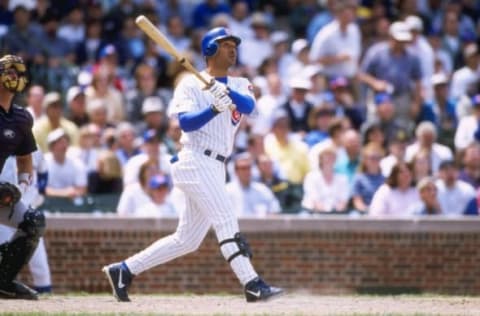
Here we take a look at five hitters who accomplished a lot at the plate with the Chicago Cubs, and perhaps their accomplishments have been overlooked.
In recent years, as the Chicago Cubs have had several good teams, they’ve gotten some significant contributions from players that we don’t talk much about anymore. Here, I’ve identified five hitters who were great at the plate for the Cubs but haven’t gotten much recognition for it. We’ll start with a slugger that lived in the shadows of a much bigger name.
Chicago Cubs: Henry Rodriguez
The summer of 1998 belonged to Sammy Sosa on the north side of Chicago. As we know, the big slugger burst onto the national stage by swatting 66 home runs and helping lead the team to a playoff berth. Yet we can’t forget the contributions of another important slugger during that season.
At age 28, Henry Rodriguez put it all together for the Montreal Expos in 1996. That year, he hit 36 home runs and drove in 103 while making the All-Star team. He followed that up with another solid season in 1997, hitting 26 home runs and driving in 83. After that season, the Cubs acquired him in a trade-in exchange for pitcher Miguel Batista.
Batista did hang around in the majors for a long time and had some respectable seasons, but this is still a trade that turned out just fine for the Cubs. Despite being limited due to injury in 1998 and only getting into 128 games, Rodriguez again hit 31 home runs and drove in 85. Though Sosa was the headliner, he and Rodriguez formed an excellent dynamic duo that season.
In 1999, Rodriguez may have been even better. In 130 games, he hit 26 home runs and drove in 87 while raising his batting average from .251 to a robust .304. In 2000, he continued his excellent home run pace, hitting 18 home runs in 76 games before the Cubs traded him to the Florida Marlins for Ross Gload and Dave Noyce.
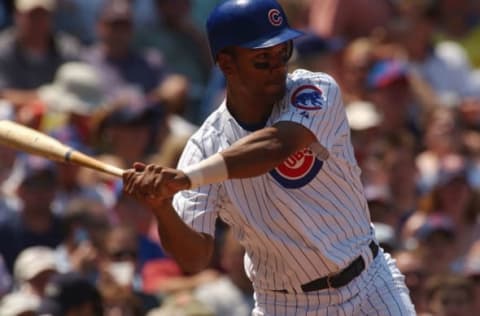
Chicago Cubs: Moises Alou
We know that Moises Alou had an excellent career at the plate overall, with a lifetime .303 batting average, 2,134 hits, and 332 home runs. He was a contributor for several different teams throughout his career, though his contributions with the Cubs are often overlooked because he’s best known for the foul ball play in Game 6 of the 2003 NLCS.
It’s a shame because Alou did a lot at the plate in his three years with the team. He signed as a free agent before the 2002 season and was expected to a game-changer for this franchise. However, his first season was a little disappointing, as he batted .275 with just 15 home runs and 61 RBIs.
Alou picked it up during the 2003 division championship season, however, and a lot of fans forget that he was 36 years old that year. He batted .280 with 22 home runs and 91 RBIs. Alou shined in the postseason, especially in the NLDS against the Atlanta Braves, batting 10-for-20 with three RBIs. In the NLCS, he was also robust, going 9-for-29 with two home runs.
Then, at age 37, Alou had a tremendous season in 2004, batting .293 with a career-high 39 home runs while driving in 106 and making the All-Star team. Unfortunately, Alou’s great season did not lead to another postseason berth for the team. He left as a free agent after 2004, going to the San Francisco Giants before finishing his career with the New York Mets.
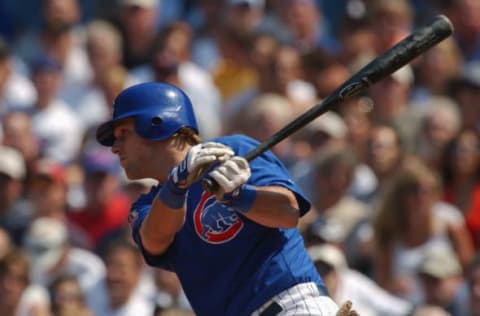
Chicago Cubs: Michael Barrett
Like Alou, the hitting accomplishments of Michael Barrett are overlooked by other events. Barrett is mainly remembered for punching A.J. Pierzynski in a game against the Chicago White Sox in 2006 and for his dugout fight with Carlos Zambrano in 2007. However, Barrett is one of the better offensive catchers that the team has had in recent memory.
In 2003, Damian Miller and Paul Bako teamed up to do a great job behind the plate for the Cubs; though they didn’t hit a whole lot, they guided the Cubs’ young pitching staff to a great season. After 2003, the team tried to go for more offense at the catcher position when they signed Barrett as a free agent.
Barrett had an immediate impact at the plate, batting .287 with 16 home runs and 65 RBIs. The next year was also productive: .276, 16 home runs, and 61 RBIs while winning the Silver Slugger Award. Then in 2006, the year he punched Pierzynski, he might have had his best year yet, batting .307 with 16 home runs for the third straight year while driving in 53; his .885 OPS was the highest of the three seasons.
Then came 2007. After 57 games and the Zambrano fight, the Cubs decided they needed to move Barrett and sent him to the San Diego Padres; the Cubs would eventually trade for Jason Kendall as they marched their way to a division title. Though the team ultimately decided that his presence was hurting the club, we can’t forget that Barrett was a productive hitter for the team for more than three seasons.
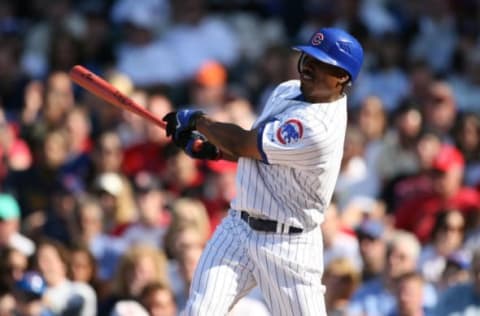
Chicago Cubs: Jacque Jones
Jacque Jones had a nice run with the Minnesota Twins from 1999 to 2005. Over seven years, the outfielder collected 974 hits while hitting 132 home runs and driving in 476. He batted .300 or better twice while hitting over 20 home runs three times. He’s an overlooked part of those early 2000s Twins teams that made the playoffs a few times.
After the 2005 season, Jones became a free agent, and the Cubs signed him. It was a move that didn’t inspire a lot of excitement from Cubs fans, and after he went hitless in his first four games in 2006, fans were already growing impatient. Yet he homered against the St. Louis Cardinals in his fifth game, which helped to break the ice, and Jones took off from there.
More from Cubbies Crib
- Cubs should keep close eye on non-tender candidate Cody Bellinger
- Cubs starting pitching has been thriving on the North Side
- Make no mistake: the Cubs are very much about power hitters
- Cubs are giving pitcher Javier Assad a deserved shot
- Cubs: It’s time to start thinking about potential September call-ups
On a miserable 2006 team, Jones was quietly a bright spot, batting .285 while tying a career-high in home runs with 27 and adding 31 doubles. He then got off to a rough start in 2007, and it seemed confident that the Cubs were going to trade him.
It’s a good thing that they didn’t. After batting .233 in the first half, Jones batted .332 in the second half while driving in a whopping 46 runs. Without him, the Cubs would not have won the division that year. We have to give Jones a ton of credit; with his first-half struggles and all the trade rumors, it would have been easy to give up. Instead, he stuck with it and became a key contributor.
The Cubs did decide to move on after the 2007 season, trading Jones to the Detroit Tigers for Omar Infante (who never appeared in a game with the team).
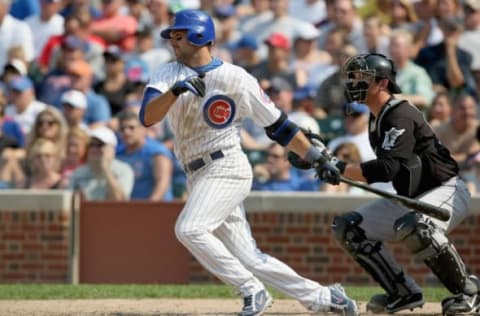
Chicago Cubs: Mark DeRosa
For years, Mark DeRosa was a utility player for the Atlanta Braves, and while he was a decent hitter, he didn’t do much to stand out. After the 2004 season, he signed as a free agent with the Texas Rangers, and in 2006, at age 31, he broke out, getting a lot more playing time. That year, he batted .296 with 13 home runs, 40 doubles, and 74 RBIs.
From that, DeRosa was able to get a free-agent deal with the Cubs. He had a tremendous first season with the Cubs in 2007, batting .293 with 10 home runs and 74 RBIs. DeRosa also displayed a lot of value in the field; though he primarily played second base, he saw action all around the diamond, providing some versatility for manager Lou Piniella.
DeRosa was then a vital part of the Cubs’ powerhouse offense of 2008 as the team comfortably won the division. That year, he batted .285 with 21 home runs and 87 RBIs, the latter of which would be a career-high. He again displayed a lot of versatility in the field as well.
As we know, the Cubs were quickly ushered out of the playoffs in both 2007 and 2008, getting swept in the first round. In what was perhaps an overreaction to that, general manager Jim Hendry decided to shake things up. He traded DeRosa to the Cleveland Indians for Chris Archer, John Gaub, and Jeff Stevens. DeRosa had another great year in 2009 between Cleveland and St. Louis, and he played for a few different teams up until 2013.
Five random team heroes. dark. Next
When thinking about those 2007-2008 teams, we often remember Derrek Lee, Aramis Ramirez, and Alfonso Soriano, among others. Yet we can’t forget DeRosa; he was a crucial contributor in the Cubs’ lineup.